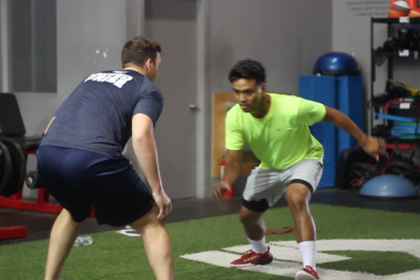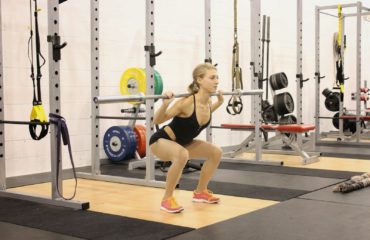3 Methods to Enhance Agility


We’ve all seen Youtube videos where athletes showcase how fast they can do a ROUTINE cone drill, or how quickly they can shuffle their feet during a ladder drill (more on this in another blog post). Not to bash those drills because they can be great at improving change of direction speed, footwork, coordination, etc. but they are just pieces of what makes up a BIGGER picture of “true” agility.
WHAT IS AGILITY?
The term ‘agility’ is often used interchangeably with change of direction (CODs) speed. They do have their similarities but they are two different skills. CODs is the ability to quickly move in multiple directions in a pre-planned environment.
Agility is the ability to quickly and effectively position, move, and change the direction of the body with response to a changing stimulus. To put simply, the diagram below from Science for Sport breaks down the component of “true” agility.

1. Cognitive
- Decision-making speed & Accuracy
- Visual Scanning
- Anticipation
- Pattern Recognition
- Knowledge of Situation
2. Physical Ability
- Leg Muscle Qualities
- Strength
- Power
- Reactive Strength
- Core Strength
- Linear Speed
3. Technical Ability
- Body Posture
- Feet Placement
- Adjustment of Steps to Accelerate
As you can see, improvements in agility require you to address all three components in training. The three methods below are often overlooked when it comes to improving agility. Incorporating these methods can help any athlete gain an edge in avoiding defenders, stopping a big play, or even winning a clutch game.
REACTIVE AGILITY DRILLS
Most sports are unpredictable; often, the athlete must react to a visual and/or verbal stimulus in a limited amount of time. A late reaction usually results in a disadvantage to the opposition. In my opinion, the best reactive drills to do are the ones that involve two athletes competing and reacting to each other.
There are numerous variations when it comes to reactive agility drills. Here’s one example:
You can perform this drill using a time-based circuit (for example, 20s on and 45-60s of rest). This drill is also great for observing how an athlete reacts and moves their body. During the drill, it’s best to allow the athlete to “auto-regulate” and figure it out themselves. Coaching cues and correcting should be done before or after the drill.
ISOMETRIC MOVEMENTS
Doing an isometric movement is a great way to develop the ability to RESIST force. In this video, I started in a kneeling position because I find that for most people it’s easier to start at the bottom instead of squatting down and pausing. Also when carrying load, starting from the bottom then coming up from the kneeling position sets you up to successfully perform the movement.
Coaching cues:
- Lift knee 1-3 inches off the ground
- Keep spine neutral
- Brace core
ECCENTRIC MOVEMENTS
Eccentric movements help in developing the ability to absorb force. This is great for improving deceleration which is a key component to change of direction speed. In this video, notice how I emphasizes on lowering the weight slowly each rep. The tempo I did was 3-4s down, pausing for 1s, then exploding up. Building strength in this movement will help an athlete absorb force and decelerate better.
Improvements in these areas can definitely enhance your in-game performance. Add them to your program and start seeing RESULTS!
If you want to become a freakish athlete, please sign up for the Coach KP newsletter by clicking HERE! You can also follow me on social media by clicking one of the platforms on the top right corner of the page.

